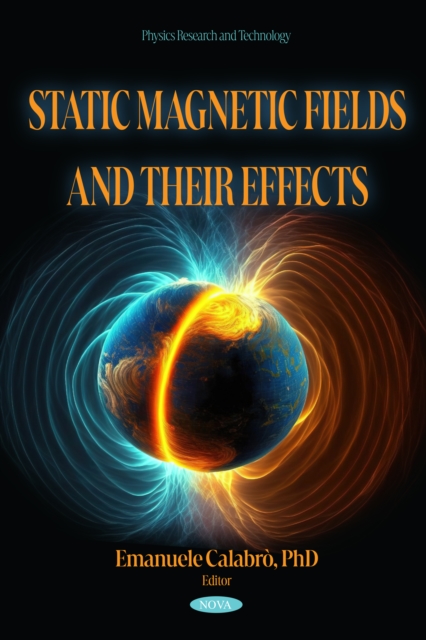
Static Magnetic Fields and their Effects PDF
Edited by Emanuele Calabro
Part of the Physics Research and Technology series
Description
This book consists of seven chapters which that study the useful effects of static magnetic fields.
The first chapter focuses on microscopic effects of uniform magnetic fields on simple organic systems like proteins, polymers, and cells where the aim of the study was to show (both experimentally and theoretically) the "strength" of static magnetic fields which that can overcome angular momentum from molecular thermal agitation of macromolecules, giving accurate explanation at the microscopic level of macroscopic effects of static magnetic fields.
In this same direction, the second chapter deepens the discussion by explaining a very important effect of static magnetic fields on cells concerning the activation of voltage-gated calcium and sodium channels induced by static magnetic fields., explaining how also Also explained is how this effect can find its theoretical explanation and can be used for therapeutic purpose, showing possible beneficial effects from static magnetic fields.
In the third chapter, effects of uniform magnetic fields on typical cells are also discussed, highlighting both harmful effects represented by alterations in ROS production and beneficial effects induced by stimulation with static magnetic fields at the cellular level.
Possible beneficial effects of static magnetic fields were also highlighted in the fourth chapter in which spectroscopic observations of the response to static magnetic fields of Tau and Creb proteins in brain can be used to detect degenerative diseases and study the memory mechanism.
In the fifth chapter, the response to static magnetic fields of chromosomal mechanism in the mitoses of some plant roots was shown, and an interesting hypothesis of a correlation between geological magnetic fields and evolutionary mechanisms during early phases of evolution was proposed.
In the sixth chapter, a theoretical discussion on the effects of a uniform magnetic field on two-phase dielectric flows of fluids and the dynamics of bubbles under an applied uniform magnetic field was shown, that which is important in advanced applications such as the cooling system of nuclear fusion reactors.
Finally, further beneficial effect of static magnetic fields was discussed in the seventh chapter, represented by using static magnetic pulses in magnetotherapy for regeneration in extreme physical activity.
Information
-
Download - Immediately Available
- Format:PDF
- Pages:143 pages
- Publisher:Nova Science Publishers, Inc.
- Publication Date:12/01/2024
- Category:
- ISBN:9798891134737
Information
-
Download - Immediately Available
- Format:PDF
- Pages:143 pages
- Publisher:Nova Science Publishers, Inc.
- Publication Date:12/01/2024
- Category:
- ISBN:9798891134737










